Zika virus outbreak: a new global threat
Review Article
Zika virus outbreak: a new global threat
- Rajendiran1*, Praveen Katiyar2
1University Institute of Pharmacy, CSJM University, Kanpur, U.P., India
2University Institute of Health Sciences, CSJM University, Kanpur, U.P., India
E-Mail: arajendiran12@gmail.com Mobile: 09935605287
ABSTRACT
Zika virus is similar to Dengue, Yellow fever, Japanese encephalitis and West Nile viruses (WNS). Zika virus is belongs to a virus family Flaviviridae and the Genus, Flavivirus; which is mainly transmitted by day time-active Aedes mosquitoes, such as Aedes Aegyptic and Aedes Albopictus. Zika virus disease was first reported from the pacific in 2007, followed by in France Polynesia and Brazil in 2013 and 2015 respectively. Zika virus spread through bite of an infected Aedesmosquito, a same mosquito that transmits Dengue and Chikungunya. The virus has also been found in semen, thus sexual transmission is also documented. During the first week of infection, Zika virus can be found in blood and therefore transmitted through mosquito bites. Symptoms of disease mostly begins with mild fever, rash and joint pain or red eyes, followed by muscular pain and headache, within 3 to 12 days after being bitten by an infected mosquito, and persist for a week. Zika virus can also spread from pregnant mother to her unborn baby. In 2014, Brazil reported 147 cases of babies born with shrunken skulls, known as Microcephaly, a congenital deformation of the skull that compresses the infant’s brain. Until now, neither vaccine nor better preventive drug is available, therefore the best way to prevent Zika virus is to avoid mosquito bites whenever traveling to an area where Zika virus is present.
Keywords: Aedesmosquitoes, Flavivirus, Microcephaly, Vaccine
INTRODUCTION
Mosquitoes born diseases are very serious global threat to human population, nearly 700 million get infected each year causing in greater than one million deaths1. Many
such diseases are malaria, dengue chikungunya, yellow fever and zika. These diseases are very prevalence in tropical and sub tropical region worldwide. Zika virus was
first found in zika forest in 1947 in an African country, Uganda from rhesus monkey, (Zika means overgrown in the local language). In human it was first identified in 1952
in Uganda2. Just 14 cases were reported in about 50 years. The outbreak occur typically in tropical Africa and south East Asia, subsequently spread to other island
nations in pacific, eventually landed in Americas on Easter Island in Chile in 2014. In Brazil zika virus was reported in May 2015, and since then sporadically infected
people in other African and Asian countries.
The global outbreak3: Until 2007, zika virus described as sporadic infection affecting human population in Africa and Asia. In 2007, an outbreak was reported from federal state of Micronesia (Yap), making the first detection beyond Africa and Asia. Zika virus had not known to cause severe disease until a major outbreak in French Polynesia in 2013-2014. Zika virus was first detected in the Americas in 2014. In Feb. 2014, Chile confirmed the first case of autochthonous transmission of zika virus in Easter Island Located in the south eastern Pacific Ocean. In May 2015, Brazil confirmed zika virus transmission. As of October 2014, 14 states confirmed autochthonous transmission. Recent outbreaks of zika virus in different region of world underscore the potential for the virus spread further, where ever the vector present. Presently zika virus spreading explosively as 3-4 million people infected in America including 1.5 million in Brazil. According to a latest World Health Organization (WHO) report, on February 2016, a total of 62 countries/ territories reported local transmission of Zika virus, indicating the rapid geographic expansion.4
The zika virus5
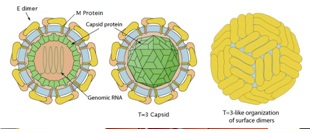
Figure 1 : Diagrammatic Diagram of Zika Virus
Family- Flaviviridae
Genes- Flavivirus
Group- Group IV (+) ssRNA
Abbreviation : ZIKV
Zika virus is a flavivirus enveloped and icosahedral and has nonsegmented, single stranded, positive sense RNA genome. It is most closely related to the Spondweni virus and is one of two viruses in the spondweni virus clade.
The Vector:Mosquitoes
Zika virus mainly transmitted through day time active female Aedes mosquitoes. Which usually bite during the day with peak during early and late afternoon/evening
hours.6
Mosquitoes Genes- Aedes
Americas- Aedes aegypti
Asia- Aedes albopictus
Zola Virus Vectors :
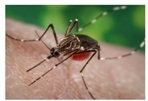
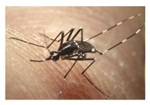
Figure 2: Aedes aegypti Aedes albopictus
- A. Aedes aegypti-sylvatic jungle cycle Aedes albopictus-urban cycle
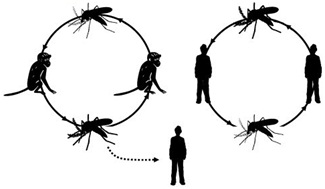
|
Monkey to Mosquito to human |
Mosquito to human |
Figure 3: Zika Virus Cycle
Transmission
Zika virus transmitted to human primarily by biting of infected day-time active aedes mosquitoes. Other mode of transmissions are maternal fetal, intra-uterine, prenatal. Zika virus can be spread from an infected pregnant woman to her unborn baby, usually in first trimester of pregnancy. Sexual transmission, blood transfusion, lab exposure, organ or tissue transplantation, may also spread zika virus. The first known case of the zika virus being sexually transmitted in the US has been reported in Texas. The Centre for Disease Control and prevention, (CDC&P) confirmed a patient was infected in Dallas country.7
To date, there are no reports of infants getting zika virus through Breastfeeding. Because of the benefits of breastfeeding, mothers are encouraged to breastfeed even if
they are traveled to an area where zika virus transmitted.8
Symptoms of Zika virus disease9: Following bite of infected aedesmosquitoes, symptoms may appear after an incubation period of a few days (within a week). Symptoms are usually mild and common such as, headache, fever, red eyes (conjunctivitis), joint pain, itching along with skin rashes (exanthema) and muscular pain.
Although only 1 in 4 people with zika infection develop symptoms. These symptoms appear in first week of infection and last 2-7days10,11 usually similar to that of other arbovirus infections such as dengue and chikungunya.
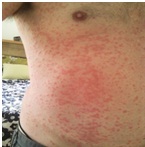
Figure 4: Infection of virus Zika (skin rashes with itching)
Microcephaly and GBS: Any illness from the zika virus is often mild but pregnant women could be most at risk because the zika virus is believed to cause serious
devasting birth defects12. Baby born with shrunken skull is known as microcephaly, and other poor pregnancy outcomes in babies, who are infected with zika virus while women in pregnant. Between 2001 and 2014 an average of 163 microcephaly cases has been recorder nationwide per year in Brazil. As of 30 January 2016, ministry of
health, Brazil reported 4783 cases of microcephaly and/ or CNS malformation including 76 deaths.13 Great risk of microcephaly appears to be associated with infection during first trimester of pregnancy. The symptoms of microcephaly include below-average head size, often caused by failure of brain to grow at normal rate.
Zika virus may also be a link with Guillian Barre syndrome (GBS), a disease in which the immune system of body mistakenly attacks peripheral nerves and begin with
symptoms of muscle weakness. In severe cases the infected person is almost totally paralyzed and the disorder can be life threatening.4
Table 1: Comparison of Dengue, Chikungunya, and zika14
|
Dengue |
Chikungunya |
Zika |
|
High fever, severe muscular pain, vomiting anorexia, hemorrhage |
High fever, intense joint pain in feet, knees, neck, hands and back (difficult to walk) |
Mild fever, head ache, skin rash with pain, muscular pain, conjunctivitis |
|
Death occur |
Death occur |
Death is rare. |
Laboratory Diagnosis15: Zika virus has been detected in whole blood (also serum and plasma), urine, cerebrospinal fluid (CSF), amniotic fluid, semen and saliva.16 Evidence says that zika virus present in urine and semen for long period than in whole blood or saliva.16 The presence of zika virus may be confirmed by using nucleic acid testing (NAT) such as reverse transcriptase- polymerase chain reaction (RT-PCR) for RNA.
Serological testing for zika virus is the preferred method in specimens from patients with onset of symptoms 7days. Recommended serological assay include enzyme immuno assay (EIAs), immunofluorescence assays (IFAs) detecting IgM antibodies using viral lysate, cell culture supernant or recombinant proteins as well as neutralizing assays such as plaque reduction neutralization tests (PRNTs).
Treatment: There is no specific treatment or cure for zika viral disease. Symptoms are treated by getting adequate rest and relax, drinking lot of fluids to prevent dehydration and taking medication like acetaminophen (Paracetamol) to relive mild fever and pain. Aspirin, and other NSAIDs, like Ibuprofen and Naproxen should be avoided until dengue can be ruled out to reduce the risk of increased gastric bleeding.17
Prevention and control11: At present, no preventive drugs or vaccine is available, only the best way to prevent zika virus is to avoid mosquito bites when travelling to an area where zika virus present. If any person infected with zika virus, it is important to avoid being bitten by mosquitoes during the first week of infection; the virus can be passed by human to mosquitoes via blood, increasing the risk of spread to others. When indoors, use air conditioning, window screens or insecticide treated mosquito netting to keep away mosquitoes. Sleep under an insecticide treated bed net. When outdoors, wear long sleeves and pants. Reduce mosquito breeding outside the home or hotel room by emptying or routinely changing standing water from containers such as flower pots, pet dishes and bird baths. Another best way to control misquotes, use insect repellents, which contain DEET, (N, N-diethyl-3-methyl benzamide), Picardin IR 3535, 3-[N-acetyl-N-butyl]-amino propionic acid ethyl ester and oil of lemon eucalyptus PMD (p-methane-3, 8-diol) to provide long lasting protection against mosquitoes.
Vaccine for zika virus17: Currently there is no available and approved vaccine for zika virus. Developing vaccine against Zika virus is a long term solution. But it is a cost and time consuming tedious process. The world Health Organization has reported that the organizations are involved in at least 15 projects to produce the first zika virus vaccine. Hyderabad based Indian company Bharat Biotech is working on two zika vaccine. Inovio pharmaceuticals working on DNA-based vaccine. The National institute of allergy and infectious diseases in the US also working on vaccine development.
CONCLUSION
Zika virus is considered an emerging infectious arbovirus disease with potential spreading to new area where aedes mosquitoes are present. The WHO declared zika virus infections as a public- health emergency of international concern, (PHEIC) in Feb 1, 2016, after zika virus had been reported transmitted to human in 62 countries, indicating the sporadic spreading worldwide.4 ZIKV infections are further challenging as majority (73%) are asymptomatic and specially in pregnant women often go unnoticed, which may lead to microcephaly and mostly death shortly after birth. Researchers are working to reveal the structure of zika virus, which could divulge the insights critical to the development of effective antiviral treatment and vaccines in future. Based on the prevailing situation author recommend to follow the proverb –“Prevention is better than cure’ which could be a better option to avoid zika virus infection, since no medication or vaccine is currently exist to prevent and or cure this disease. Authors also conclude that its a very high time for researchers to contribute infighting such an alarming situation, the microbiologists and biotechnologists should focus on vaccine development, synthetic organic and medicinal chemists should work on structure and biological activity studies (SAR) on existing antiviral would be pivotal for future drug development, pathologists and clinical biochemists should develop a precise and exclusive diagnostic tool for zika virus. ZIKV infections are further challenging, as majority (73%) at asymptomatic and in pregnant women, often go unnoticed which may lead to microcephaly which may also lead to death shortly after birth.
REFERENCES
- 1. Hector C. Emergency Department Management of Mosquito borne illness Malaria, Dengue, and West Nile virus Emergency Medicine Practice 2014 May 16(5):1-24.
2. Tean Zaheer. Zika virus disease- an emerging devastation. Assistant Editor, The veterinary news and views, DVM Student, FVS, UAF. Available at http://www.slideshare.net/princesssania7/zika-virus-disease.
3. WHO, Zika virus outbreak in the Americas, weekly epidemiological record; No. 45, 2015;90:609-616.
4. Charles Patrick Davis. Zika Virus. Available at www.medicinenet.com/zika_virus/article.htm
5. Zika Virus, 2016. Available at https://en.wikipedia.org/wiki/zika_virus
6. Zika Virus. WHO Fact Sheet, Updated on 2 June, 2016. Available at www.who.int/mediacentre/factsheets/zika/en
7. BBC News: Zika virus infection possibly 'through sex' reported in US. Available at www.bbc.co.in/news/world-us-canada-35478778
8. Zika Virus: Washington State Dept. of Health. Available at www.doh.wa.gov/youandyourfamily/ illnessandDisease/zikavirus
9. Zika Virus : Symptoms, Diagnosis and Treatment. Available at Medbuzztoday.com/zika–virus-symptoms-diagnosis-and –treatment/
10. Zika virus potential complications Questions & Answers: Zika virus, updated 5 April 2016. Available at http://www.who.int/features/qa/zika/en/
11. Zika Virus : Symptoms, Facts, Diagnosis. Last update 15 July, 2016. Available at www. medicalnewstoday.com/articles/305163. php?page=2.
12. (A) Zika Virus : Health Direct. Available at www. healthdirect.gov.au/zika-virus
(B) Manoel Sarna et al. Zika virus infection and stillbirths : A case of Hydrops Fetalis, Hydranencephaly and Fetal Demise. PLOS Neglected Tropical Diseases. 2016 Feb. 25; 10(2) : e0004517
13. WHO zika situation report, 5 February 2016. Available at http://www.who.int/emergencies/zika-virus/situation-report/en/
14. Arizona arbovirus hand book for chikungunya, dengue, and zika virus. Arizona department of Health Services 2016, 3 March, page 31,32.
15. Laboratory Testing for Zika Virus infection. WHO, Interim Guidance, 23 March, 2016. Available at WHO_ZIKV_LAB_16.1_eng.pdf, page 1, 2
16. Ann-Claire G, Olivia O, Elodie C, Cyrille G, Myrielle DR. Detection of Zika Virus in Urine. Emerging Infectious Diseases. Central for Disease control & prevention 2015, January;21:84-86.
17. Deborah Fields. Zika Vaccine Development. News Medical. Available at www.news-medical.net/ health/zika-vaccine-development.aspx




